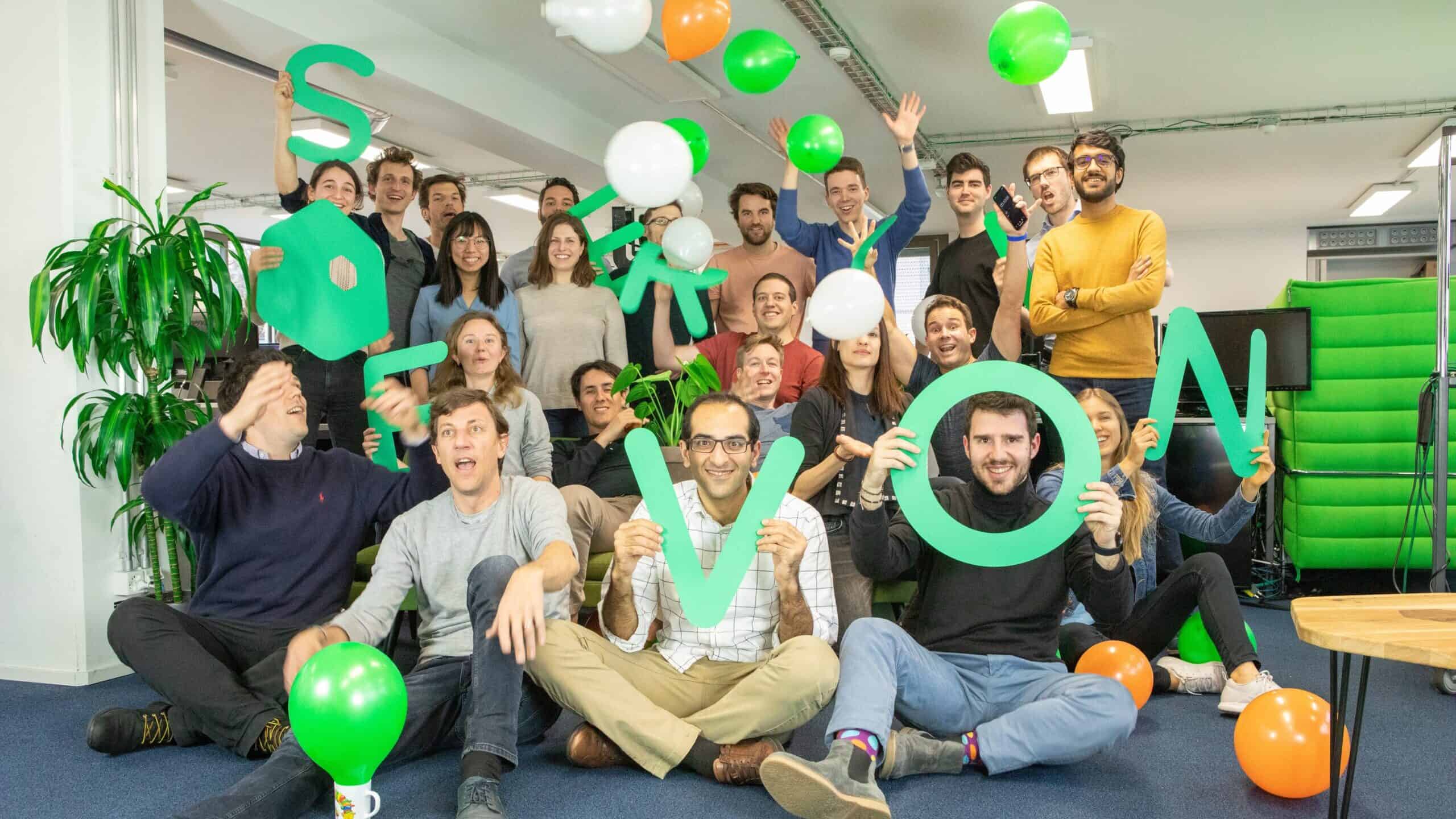Augmented reality glasses have found their industrial applications and help workers perform complex tasks and collaborate with others. In this interview, AR expert Leon Laroue explains what the market drivers are and why Lenovo has chosen to work with Swiss startup Sphere as an independent software provider.

Software Product Manager, Commercial AR/VR, Lenovo
Leon works on making Lenovo’s ThinkReality platform the go-to hardware and software AR/VR platform for enterprises looking to embrace emerging technology. Lenovo is the world’s largest PC vendor and employs more than 70’000 people worldwide. Leon has more than 5 years of experience in the Augmented Reality industry, worked for Goldman Sachs as Software Developer, and has an MBA from UCLA Anderson School of Management.
You started your career as a software developer for Goldman Sachs. How did you end up in the AR/VR space?
After studying Computer Science at UC Berkeley, I moved to New York and worked on a derivatives trading platform as a software engineer. I went on to do an MBA because I saw that my calling was more in bridging the software and commercial side of the business. By coincidence, Epson was recruiting for their small team that was working on the Moverio smart glasses, and I became the product owner for software. My task was to identify the market drivers and to motivate developers to build apps for the many different use cases which ranged from remote collaboration to drone piloting and even apps for museums. Two years ago, I joined Lenovo, which was ramping up its AR/VR business, they brought a lot of different people from the industry on board, including from companies like ODG, Meta (the first Meta), Daqri, …etc.
What does Lenovo offer in this space?
We produce our own hardware and have unveiled the ThinkReality A3 smart glasses this year, which were awarded Time Magazine’s Top 100 Best Inventions of 2021. But hardware is just one pillar of our end-to-end offering. The other pillars are software and professional services. On the software front, we provide an AR/VR deployment management platform, that allows us to offer solutions and applications from third-party software providers. The startup Sphere was actually the first partner we worked with. We strive to work with best-in-class solutions, and they were looking to work with a strong go-to-market partner. It was a perfect match.
” The startup Sphere was actually the first partner we worked with. We strive to work with best-in-class solutions, and they were looking to work with a strong go-to-market partner. It was a perfect match.”
Before we talk more about the use cases of AR and VR, can you elaborate on how the hardware has improved?
All the hardware manufacturers strive for common goals such as improved wearability, increased battery life, a bigger field of view, and more computing power for spatial applications. However, they have also differentiated themselves by the functionality they offer. On one end of the spectrum, you have Google Glass type of very light kit optimized for all-day wearing, and low cost. On the other end, you have high-end devices such as Microsoft Hololens which is optimized for spatial computing and has very good tracking capabilities but weighs half a kilogram and has a high price tag. Its clear that one device doesn’t fit every use case. Lenovo has launched its ThinkReality A3 smart glasses this year, but our management platform is device agnostic, it will work with a growing number of third-party devices.
What are the use cases for AR that are already proven?
I think everyone would agree that remote assistance is the best use case for AR today. Connecting technicians and other workers in the field with an expert who can see the same through the glasses saves a lot of time and money. And with AR glasses, their hands are free to work with. Covid has accelerated this development a lot, it was difficult to travel and there were restrictions on how many people could be in a room at the same time. The second most important use case is guided workflows, which is similar to the first one, but instead of an expert guiding you, you display manuals in the field of view, no matter if it’s a Youtube video or pdf.
“Connecting technicians and other workers in the field with an expert who can see the same through the glasses saves a lot of time and money.”
What other possible use cases are there?
Beyond these two spatial collaboration has been growing a lot recently. This is about displaying a digital version of a real-world object in industries such as architecture, engineering and construction, where there is a need for collaboration around these CAD or BIM models. With all the hype about the metaverse ongoing, we shouldn’t forget that it’s not just about the consumer – there is an enterprise metaverse emerging. But this will take time and money because companies have to invest in digitizing their assets and have digital twins of them available.

Invest in Startups
As one of Europe’s most active venture capital investors, we grant qualified private investors access to top-tier European startups. With investments starting at EUR/CHF 10’000, you can build your own tailored portfolio over time and diversify across stages and sectors.
How do companies go about this and have their machinery and factories made available as AR objects?
This content creation will get a lot easier over time. The technology to create such content will be democratized. With enough computing power and a phone that has integrated Lidar scanners, everyone will be able to create digital twins of existing objects. What companies do today is to work with specialized AR/VR content creation firms. Our professional services division, for example, helps to create such 3D assets or to create digital workflows.
As you mentioned before, Lenovo has partnered with the startup Sphere and also works with other independent software vendors. What is the motivation for this?
We want to be able to address use cases in as many verticals as possible. Lenovo has best-in-class hardware, a lot of experience in managing deployments, and a global salesforce. We want to maximize our reach, and working with ISVs that built solutions for specific markets allow us to do that. Sphere has a very good horizontal application, which covers several different verticals at once. AR and VR software necessitates a lot of focus, even large companies cannot develop hundreds of different applications at once. If you want to sell hardware, partnering with ISVs is how you scale fast.
What does Lenovo’s partnership with Sphere entail?
Our strength is clearly in the go-to-market. Most fortune 500 companies are clients of Lenovo, we sell them servers and laptops, and we have account managers responsible for them. Our sales executives can upsell them our AR glasses, and every conversation includes Sphere as a premiere software solution. The feedback from the market is very positive. Usually, customers buy a couple of units and start a pilot program. Our global business development team then works with them to ramp up the deployment across their organization.
What is holding AR back from becoming a standard way of working in an industrial environment?
The evolution of hardware follows the path I described before, and we’ll see more advancements that make AR glasses easy to use and increase their performance. Another important factor that will drive adoption is on the software side, namely out-of-the-box integration with existing software systems. This is needed to make the big leap from a pilot project with a few users to deployment across entire companies with tens of thousands of glasses. You can’t tell the IT department of a client that they need to figure out how to connect these glasses with their software. The more bespoke a system is, the harder it is to sell. You need to make this transition easy. Sphere already connects with SAP’s Field Service Management software for example, and that helps a lot. At one client in the semiconductor industry, with a deployment of a couple of hundred units, our professional services did the integration work with their backend systems. Sphere has integration with Zoom and Microsoft teams on their roadmap, and this will further help to reduce the barrier to adoption because every client knows these apps.
What are emerging trends that will shape the AR/VR space going forward?
We’ll see more usage of the phone as a companion device, as an intermediate between the headset and the cloud. Phones are ubiquitous, everyone has one. And it will be very exciting to see phone apps run in 3D. We’ll also see more pass-through devices hitting the market. These are VR headsets, which means you can’t see through them, but they add cameras to render your environment digitally on the screen. VR gaming has helped a lot to develop VR applications, which tend to be further developed than AR at the moment, and these devices will let you interact with your environment in VR.
Written by
WITH US, YOU CANCO-INVEST IN DEEP TECH STARTUPS

Verve's investor network
With annual investments of EUR 60-70 mio, we belong to the top 10% most active startup investors in Europe. We therefore get you into competitive financing rounds alongside other world-class venture capital funds.
We empower you to build your individual portfolio.
More News
11.11.2021
How AI can help prevent shoplifting
Shoplifting is a 100 billion Euro problem. Startup Veesion has developed algorithms that analyze gestures and can catch up to 10 times more thieves than a security guard. In this interview, co-founder Thibault David explains how that works.
26.04.2021
“Quality is contagious”
In our second article from our "Portfolio Success" series, Alexandra Ragalie talks to Seervision's co-founder Nikos Kariotoglou. Nikos explains how the idea of the company was born, what is of importance to him when making decisions and how Seervision helps companies such as Google’s DeepMind to make high-quality visual storytelling effortless.
02.09.2019
Star Wars-style 3D-projections are coming to your living room
Prof. Touradj Ebrahimi is a world-renowned expert in the field of multimedia. In our interview, he talks about light field technology, which promises to change radically how content will be produced and watched in the future.
Startups,Innovation andVenture Capital
Sign up to receive our weekly newsletter and learn about investing in technologies that are changing the world.




